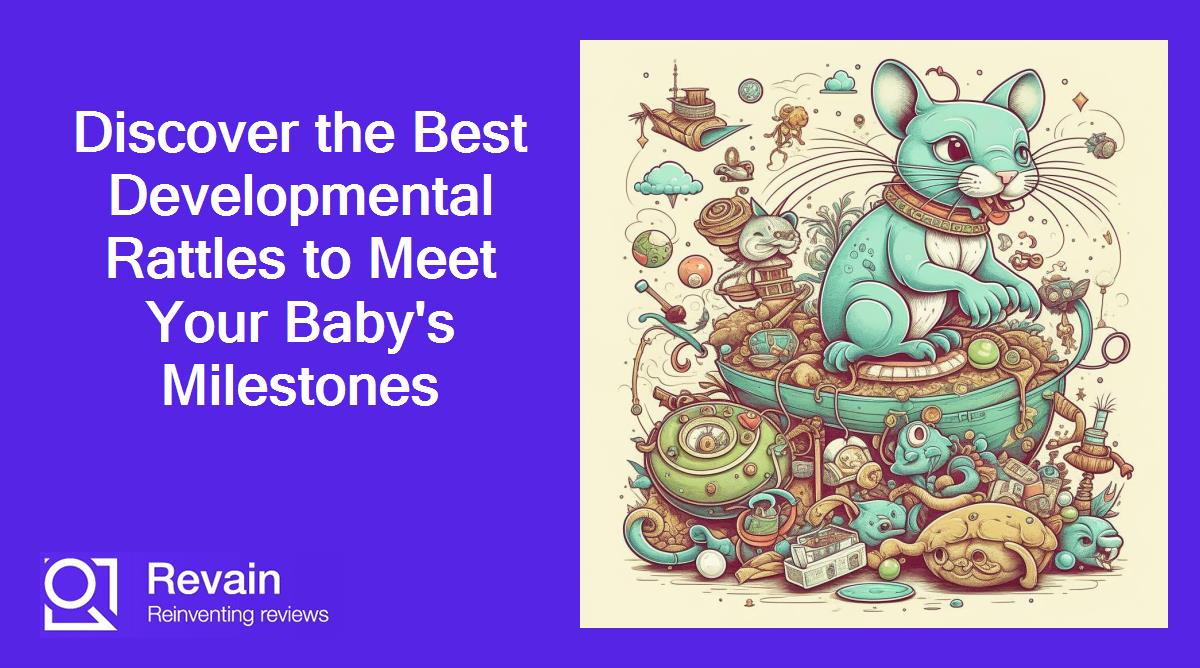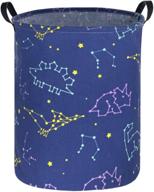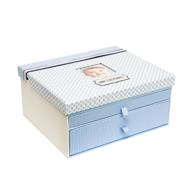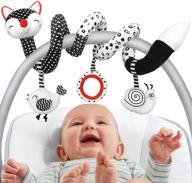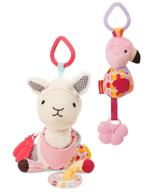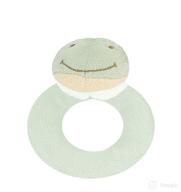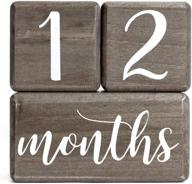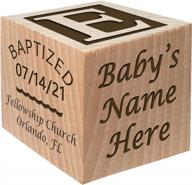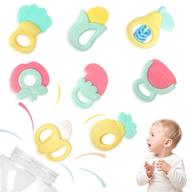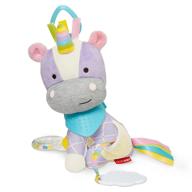Another interesting products
Benefits of Baby Rattles
Baby rattles are more than just toys - they provide many developmental benefits for infants. Here are some of the key ways that rattles can help promote your baby's growth.
Enhances Motor Skills
Rattles help build your baby's fine motor skills as they learn to grasp and shake the rattle. The motion involved in shaking a rattle helps strengthen muscles in the hands and arms. Rattles with textures and grips can provide even more opportunity to develop motor coordination.
Stimulates the Senses
Colorful rattles with a variety of textures, sounds, and visuals provide sensory stimulation. As your baby sees, hears, feels, and explores their rattle, neural connections are formed in the brain.
- Bright colors and patterns - visual stimulation
- Different sounds from shaking - audio stimulation
- Textured surfaces - tactile stimulation
Top products in 🐍 Rattles
Encourages Cause and Effect
As your baby shakes the rattle and hears the resulting sound, they begin to understand cause and effect. This cognitive connection is an important developmental milestone. Rattles help promote early critical thinking skills.
Aids Hand-Eye Coordination
Following a rattle with their eyes and trying to grasp it helps your baby improve their hand-eye coordination. The more practice they get, the better their coordination will become.
Provides Mental Stimulation
In addition to physical skills, rattles also exercise your baby's brain. The sights, sounds, and general novelty provides mental stimulation to build neural connections.
| Age | Mental Development Milestone |
|---|---|
| 0-3 months | Focusing on objects 8-12 inches away |
| 3-6 months | Improved hand-eye coordination |
| 6-9 months | Understanding cause and effect |
Conclusion
Baby rattles provide a wide range of developmental benefits through sight, sound, touch, and motion. From fine motor skills to sensory stimulation to cognitive growth, rattles are an excellent tool to boost your baby's physical and mental abilities. Providing safe, stimulating rattles will help set up your child for future learning and growth.
Similar products
Types of Baby Rattles
There are many types of baby rattles that provide sensory stimulation and help develop fine motor skills. Here are some of the most common types of rattles:
Traditional Hand Rattles
These are classic rattles that are designed to be held and shaken by baby. They come in many shapes and sizes such as:
- Rings - circular plastic rings with beads inside
- Blocks - cube or rectangular shaped block with interior beads
- Shapes - fun animal or object shapes like elephants or keys
Teething Rattles
Rattles with textured surfaces and materials that soothe sore gums during teething. Some examples:
- Textured rings - bumpy or grooved exterior for massaging gums
- Water-filled teethers - liquid interior can be cooled in the fridge
- Vibrating teethers - provide massaging vibration
Plush Rattles
Soft, plush rattles that crinkle or rattle. These include:
- Animal shapes - plush bears, elephants, etc. with crinkly material inside
- Activity balls - soft balls with rattle beads and textures
- Rattle blankets - blankets with rattles or crinkly material sewn inside
Musical Rattles
Rattles that play music, sounds or lights up when shaken. Such as:
- Sound rattles - plays melodies, nature sounds, etc.
- Light-up rattles - flashes lights with shaking motion
Attachable Rattles
Rattles designed to attach to baby items like strollers, cribs, or play mats:
- Stroller toys - attach to stroller handle or bar
- Crib rattles - affix to crib rail
- Play mat rattles - secure to activity gym
| Type | Benefits |
|---|---|
| Traditional | Improve grasping and shaking motions |
| Teething | Soothe sore gums |
| Plush | Provide tactile stimulation |
| Musical | Auditory stimulation |
| Attachable | Accessible stimulation |
Conclusion
With so many options, you can find the perfect rattle to stimulate your baby's senses and promote their developmental growth. Try different shapes, textures, sounds and designs to keep your baby engaged.
Baby Rattle Materials
Baby rattles come in a variety of materials, textures, and finishes. Considering the safety, durability, and appeal of the materials used is important when selecting a rattle.
Plastic
Plastic is one of the most common rattle materials. It offers advantages like:
- Lightweight
- Easy to clean
- Colorful, bright designs
- Texture can be added
- Inexpensive
Look for BPA-free plastic that won't contain harsh chemicals. Avoid brittle plastics that could crack or break under pressure.
Wood
Wooden rattles provide benefits like:
- Natural, sustainable material
- Smooth, lightweight texture
- Naturally antibacterial
- Can be painted or left unfinished
Ensure wooden rattles are sealed properly so they don't absorb bacteria or saliva. Avoid rattles with peeling paint or splinters.
Fabric
Fabric covers on rattles offer pros like:
- Very soft texture
- Machine washable
- Bright colors and cute designs
- Adds crinkle or rattle sounds
Make sure all fabric is secured tightly so no loose parts or stuffing can come out. Avoid fabrics treated with toxic chemicals.
Silicone
Silicone rattles provide features like:
- Extremely durable material
- Easy to sterilize
- Resists bacteria buildup
- Can be flexible or rigid
Opt for food-grade, BPA-free silicone from reputable brands. Silicone shouldn't contain phthalates or PVC.
Conclusion
The right rattle material provides safety, stimulation, and durability. When used properly, plastic, wood, fabric, and silicone can all be great options. Read labels carefully and inspect materials to find the ideal rattles for your baby's needs.
Rattles for Developmental Milestones
As babies grow, they reach important developmental milestones. Rattles can be helpful tools for meeting many of these milestones across cognitive, motor, and sensory domains.
Birth to 3 Months
In the first few months, infants are developing basic visual focusing skills. High contrast black and white rattles in simple geometric shapes help capture baby's attention and strengthen eye muscles.
3 to 6 Months
At this age, babies are improving their hand-eye coordination and learning to track moving objects. Lightweight plastic rattles with bright colors and patterns can be easily grasped and shaken to build coordination.
6 to 9 Months
Around 6 months, cause and effect understanding emerges. Rattles that make sounds or light up when shaken help babies make the connection between their action and the resulting effect.
9 to 12 Months
In later infancy, fine motor skills rapidly improve. Multi-textured rattles with different grips, like rings, octagons, or balls, allow more sophisticated grasping and wrist rotation.
| Age | Milestone | Rattle Features |
|---|---|---|
| 0-3 months | Visual focusing | Black/white, geometric shapes |
| 3-6 months | Hand-eye coordination | Bright colors, light plastic |
| 6-9 months | Cause and effect | Sound or light activation |
| 9-12 months | Fine motor skills | Textured grips, varying shapes |
Conclusion
Rattles designed with appropriate sensory elements, weight, texture, and visuals can provide the right stimulation for each stage of development. Selecting rattles tailored to your baby's current abilities allows them to practice emerging skills while having fun!
How To Play Maracas?
To play the Maracas, you need to follow these steps:
- Hold the Maracas correctly by supporting them with your thumb behind the instrument and the first three fingers on the front, leaving the pinky finger up in the air.
- Start by shaking the Maracas gently to produce a soft sound.
- Practice shaking the Maracas in different directions to produce different sounds. You can shake them up and down, side to side, or in a circular motion.
- Experiment with different rhythms and tempos. You can play the Maracas fast or slow, depending on the music you are playing. 2
- Use your wrist to control the movement of the Maracas. You can shake them softly or more vigorously to produce different sounds.
- Try playing the Maracas with different parts of your hand, such as your fingertips or the palm of your hand, to produce different sounds.
- Practice playing along with music to improve your timing and rhythm.
Remember to always hold the Maracas correctly and start with gentle shaking to produce a soft sound. With practice, you can learn to play the Maracas with different rhythms and tempos, and produce a variety of sounds by shaking them in different directions and with different parts of your hand.
What Are The Different Types Of Maracas??
There are different types of Maracas available, and they can be made from various materials. Here are some of the different types of Maracas:
- Traditional Maracas: These are the most common type of Maracas and are made from dried calabash gourds or turtle shells filled with beans, beads, or pebbles.
- Modern Maracas: These Maracas are made from synthetic materials such as plastic, wood, or leather.
- Venezuelan Maracas: These Maracas are made from calfskin and are known for their unique sound.
- Gourd Maracas: These Maracas are made from carved gourds and are decorated with woodburned designs and colors.
- Axatse Shekere Maracas: These Maracas are made from plastic beads and are used in African music.
- Hand Painted Wooden Maracas: These Maracas are made from wood and are hand-painted with unique designs.
- Toca Player's Maracas: These Maracas are made from durable plastic and are designed for professional use.
Maracas can also be categorized based on their origin, such as Latin American Maracas or African Maracas. They can also be played in different ways, such as shaking them or hitting them to produce different sounds.






